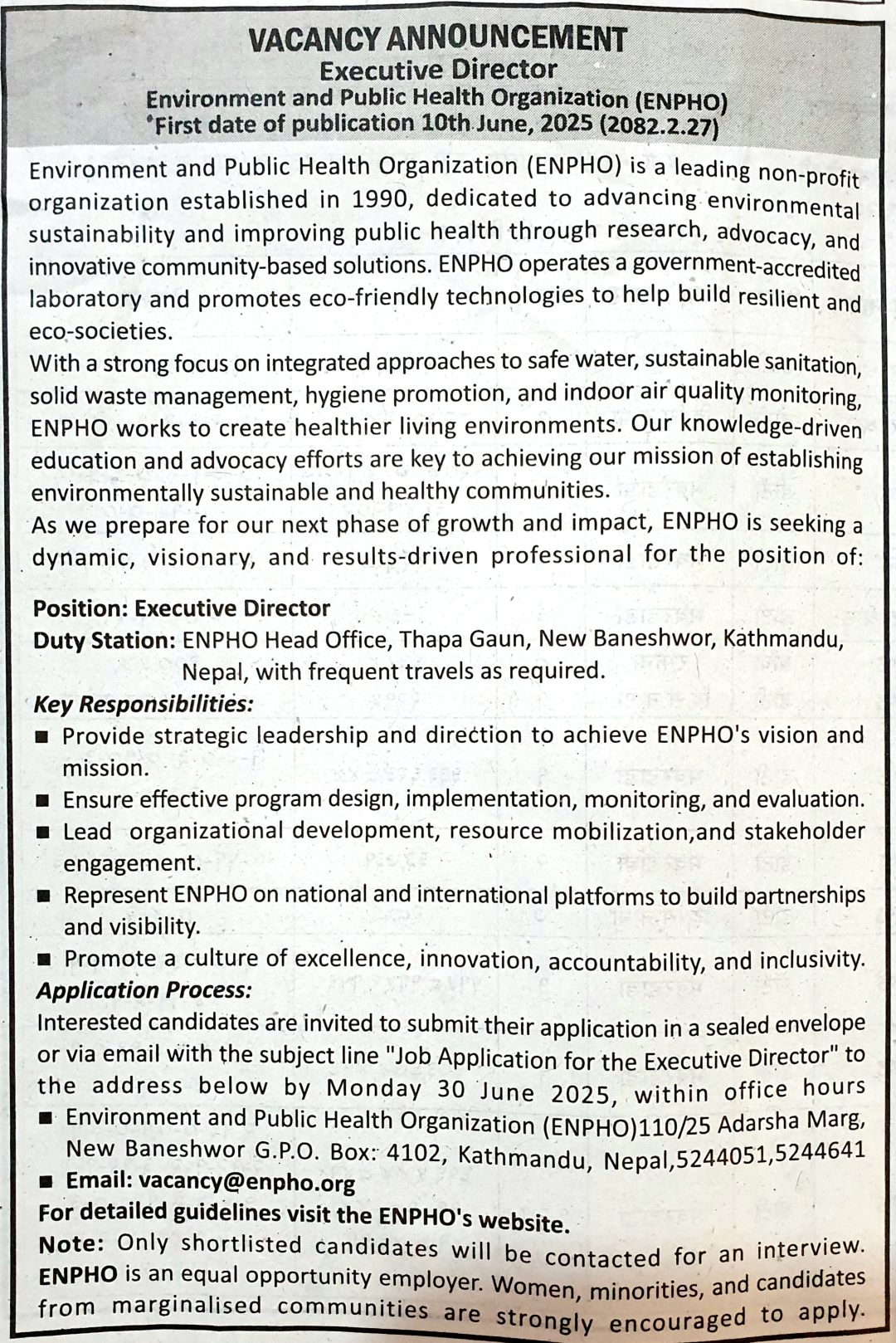Project Donor: Global Affairs Canada (GAC)
Project Partner: Centre for Affordable Water and Sanitation Technology
Project Area: Earthquake affected districts: Dolakha, Kavrepalanchwok, Sindhupalchwok, Nuwakot and Dhading
Project Duration: January 2017 to December 2020 (Extended)
Aim:
- Toequip local governments and other community organizations with new knowledge, skills and innovations to better respond to the water and sanitation needs of earthquake affected populations, especially women, men, girls, boys and people of lower
- To increase consumption of potable water by earthquake affected populations, especially women, men, girls, boys and people of lowercastes;
- To increase use of gender appropriate, environmentally sustainable, improved sanitation services by earthquake affected populations, especially women, men, girls, boys and people of lower castes.
Project Description:
This project is being implemented by ENPHO with the support from GAC and CAWST to enhance the capacity of local organizations on technical aspect of WASH and message delivery so that community people can be influenced to improve or change their WASH behavior. The project is being undertaken in five earthquake affected districts namely Dolakha, Kavrepalanchwok, Sindhupalchwok, Nuwakot
Project Outputs:
| SN | Activities | Target | Progress till July 15, 2020 | Participant/ beneficiary/ Remarks |
| 1 | Training package development | 44 | 50 | Include 21 online orientation package on COVID and WASH |
| 2 | IEC material development | 20 | 33 | Poster, flex and pamphlets |
| 3 | Training events | 94 | 102 | 1410 |
| 4 | Online sessions (COVID and WASH) | 32 | 38 | 560 participants |
| 5 | Webinar (COVID and WASH) | 0 | 3 | 190 participants |
| 6 | Learning exchange | 3 | 2 | 58 |
| 7 | Virtual learning exchange | 0 | 2 | 52 |
| 7 | Institutional Case study | 6 | 4 | Individual 4 organization |
| 9 | Success Stories | 0 | 10 | 2 per district |
Training package/education material development and distribution
- Developed 6 training package and 12 online packages
- Developed 20 types of education and 22 types of IEC materials
- Distributed 45 training material bag, 3,582 education material and 45,000 poster and pamphlets to local organizations
Training and follow up
- Organized 38 training events for 567 participants
- Conducted 20 consultation support to individual and organization
- Carried out 18 training follow up events for training participants and participating organizations
Demonstration and implementation
- Implementation of Model Healthy Community (MHC) approach in five district to demonstrate integrated effort to achieve complete WASH practice at household level
- Established 3 mini lab in district level to demonstrate feasibility of water quality testing at district level.
- Completed baseline for model healthy community and annual survey
- Implemented Behaviour Change Campaign (BCC) applying BCD model focusing on filter use and clean toilet in the five project district targeting 75,000 households.
Major Achievements:
- Altogether 5 communities (one community in each district) having 1,014 households declared as Model Healthy community in the presence of local government and district level organizations. This was declared after meeting 15 indicators of WASH practices in each household.
- The behavior change campaign abled to ensure proper filter use in 23,228 households, use of clean toilet in 31,612 households and proper hand washing station in 23,483 households.
- Three water quality testing mini labs established in there different project district in coordination with local organization in business model and two mini labs already started their service.
- ENPHO Training Centre experienced intensive implementation of behavior change campaign in Behaviour Centric Design (BCD) model which has increased confidence level of the team to implement such campaign in another area.
Beneficiaries:
2,160 people capacitated (Direct)
3,91,615 people capacitated through trained human resource (Indirect)






